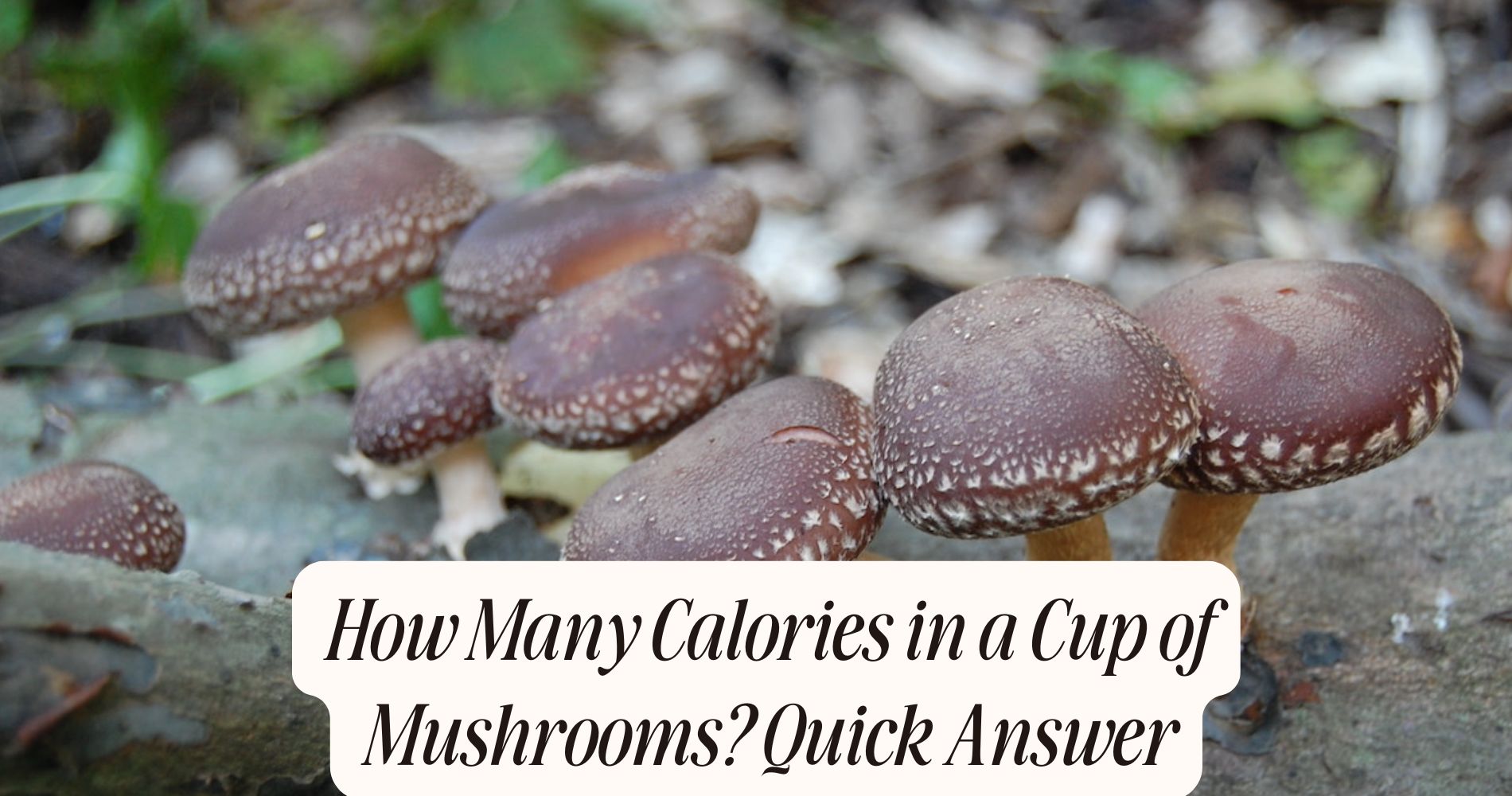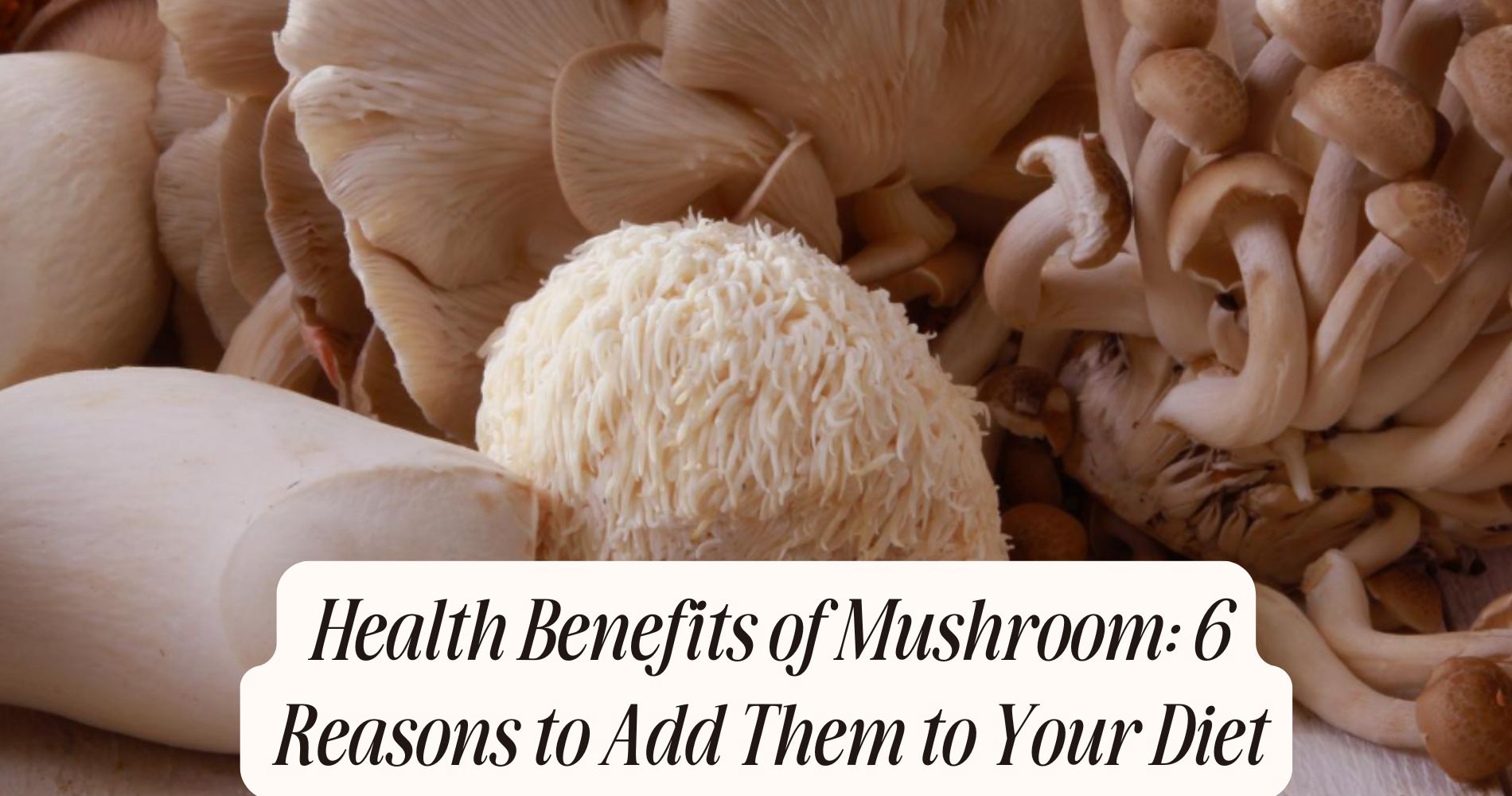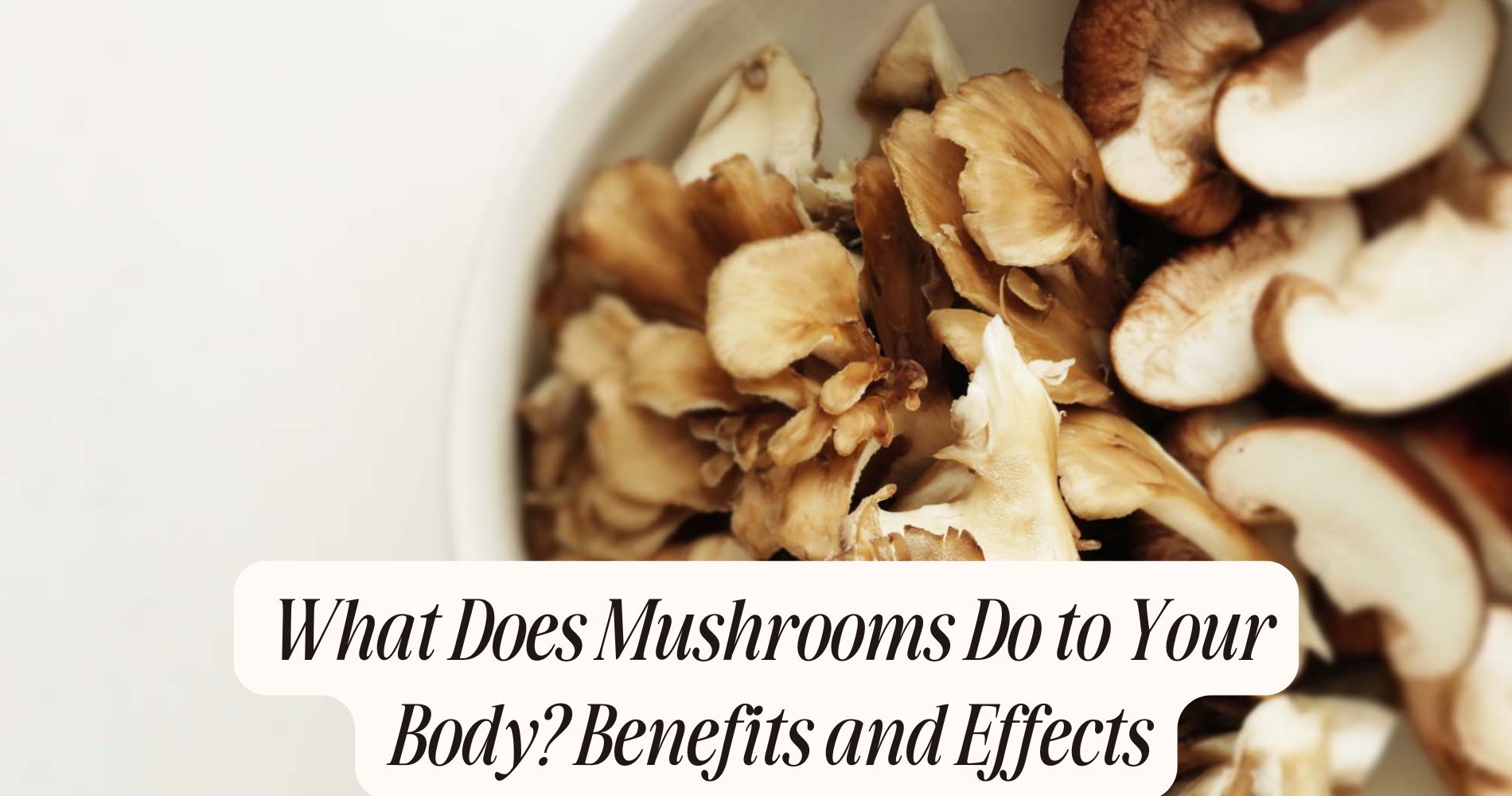
How Many Calories in a Cup of Mushrooms? Quick Answer
How many calories in a cup of mushrooms? When you're trying to manage your calorie intake, knowing how many calories are in a cup of mushrooms can be quite helpful. Different types of mushrooms pack varying caloric values, from shiitake to portobello. Their low-calorie nature, combined with unique flavors, makes them a versatile ingredient. Curious about how to incorporate these fungi into your meals while maximizing their nutritional benefits? Let's explore further.
Types of Mushrooms and Their Caloric Content
When you consider adding mushrooms to your diet, it’s helpful to know that different types come with varying caloric content. For instance, a cup of raw shiitake mushrooms contains approximately 81 calories. They’re not just low in calories; they also provide a unique flavor that enhances many dishes.

On the other hand, a cup of raw portobello mushrooms has around 35 calories, making them an excellent choice if you're watching your calorie intake.
Both types offer versatility in cooking, whether grilled, sautéed, or used in soups. Understanding the caloric differences can help you make informed choices that align with your dietary goals while enjoying the distinct tastes of shiitake and portobello mushrooms.
Nutritional Benefits of Mushrooms
Although mushrooms are often overlooked, they pack a powerful nutritional punch that can benefit your health in various ways. They’re rich in mushroom antioxidants, which help combat oxidative stress and reduce inflammation in your body.
These antioxidants, including ergothioneine and selenium, play an essential role in maintaining overall health. Additionally, mushrooms provide a good source of vitamins, minerals, and dietary fiber, contributing to a balanced diet.
Their unique compounds can enhance immune support, helping your body fend off illness. By incorporating mushrooms into your meals, you not only boost flavor but also elevate your nutrient intake.
With their low-calorie count and high nutritional value, mushrooms are a smart choice for anyone looking to improve their health.
How to Incorporate Mushrooms Into Your Diet
Incorporating mushrooms into your diet can be both simple and delicious. Start by adding them to your favorite mushroom recipes, like stir-fries or soups. They complement a variety of dishes and can enhance flavors while providing essential nutrients.
If you’re following specific dietary preferences, mushrooms are versatile; they can be grilled, roasted, or sautéed and work well in vegan, vegetarian, or gluten-free meals. Try stuffing them with quinoa and vegetables for a hearty option.

You can also blend them into sauces or use them as a pizza topping for an extra layer of taste. Experiment with different varieties, like shiitake or portobello, to discover new flavors and textures that suit your palate.
Comparing Mushrooms to Other Vegetables
While you might think of mushrooms as just another vegetable, they actually offer unique nutritional benefits that set them apart from many other produce options.
Various mushroom varieties, like shiitake and portobello, are low in calories and packed with nutrients such as B vitamins, selenium, and antioxidants. In vegetable comparisons, mushrooms often stand out due to their umami flavor, which can enhance dishes without adding extra calories.

Unlike many traditional vegetables, mushrooms contain a good amount of fiber, which supports digestive health. Additionally, they’re one of the few non-animal sources of vitamin D when exposed to sunlight.
Incorporating mushrooms into your diet can boost both flavor and nutritional value, making them a smart addition to your meals.
Cooking Methods and Their Impact on Caloric Content
When you cook mushrooms, the method you choose can greatly affect their caloric content and overall nutritional profile.
Sautéing mushrooms often involves using oil, which can increase their calorie count. Depending on how much oil you use, sautéing effects might add around 50-100 calories per serving.
On the other hand, grilling mushrooms offers several advantages; it typically requires minimal or no added fats. This method preserves the mushrooms' natural flavor while keeping their caloric content lower.
Plus, grilling enhances their texture, making them a delicious option without considerably increasing calories.
Tips for Choosing Fresh Mushrooms
Choosing fresh mushrooms can greatly enhance your culinary experience. When you're shopping, look for firm, plump mushrooms with a smooth, unblemished surface. Avoid any that appear slimy or have dark spots, as these are signs of spoilage.
For the best flavor, focus on seasonal mushroom availability; certain varieties thrive at different times of the year. For instance, chanterelles are typically in season during summer, while shiitakes can be found year-round.
Also, pay attention to the aroma; fresh mushrooms should have a pleasant, earthy scent. Don't hesitate to ask local vendors about their fresh mushroom selection, as they can provide insights into the best options for your cooking needs.
Fresh, high-quality mushrooms can transform your dishes remarkably!
Your Daily Dose of Mushrooms, Made Delicious
If you love the health benefits of mushrooms but want an easier way to enjoy them, meet SUPER MUSHROOM GUMMIES from Well Gummies. Packed with 10 functional mushrooms, these tasty wild berry chews support sharper focus, calmer energy, and a stronger immune system—all without the prep work. Vegan, convenient, and absolutely delicious, they deliver the power of mushrooms with no jitters or crash—just steady, all-day wellness you can chew on.
Frequently Asked Questions
Do Mushrooms Have Any Fat Content?
Yes, mushrooms have minimal fat content, making them a low-fat option in mushroom nutrition. Typically, a cup contains only about 0.2 grams of fat, providing healthy nutrients without adding significant fat to your diet.
Can Mushrooms Help With Weight Loss?
Mushrooms can support your weight management goals due to their low calorie count and high fiber content. Incorporating these nutritious fungi into your diet offers various mushroom benefits, helping you feel fuller and satisfied longer.
Are There Any Calories in Dried Mushrooms?
Dried mushrooms do contain calories, though they’re relatively low. When considering dried mushroom nutrition, you’ll find a calorie comparison shows them to be nutrient-dense, providing vitamins and minerals without excessive calories for your diet.
How Do Mushrooms Affect Blood Sugar Levels?
Mushrooms have a low glycemic index, meaning they won't spike your blood sugar levels. Incorporating them into your diet can support blood sugar regulation, making them a healthy choice for managing diabetes or maintaining stable energy.
Are Mushrooms a Good Source of Protein?
Mushrooms offer decent protein content, making them a valuable addition to your diet. While they’re not a primary protein source, their unique mushroom nutrition complements other protein-rich foods, enhancing overall dietary balance and health benefits.
Conclusion
Incorporating mushrooms into your diet is a smart choice for boosting flavor and nutrition without adding many calories. With options like shiitake and portobello, you can enjoy their unique tastes while keeping your caloric intake low. Plus, their versatility allows you to use them in countless dishes. By choosing fresh mushrooms and experimenting with different cooking methods, you can maximize their benefits. So, next time you're planning a meal, consider adding a cup of mushrooms for a nutritious boost!




